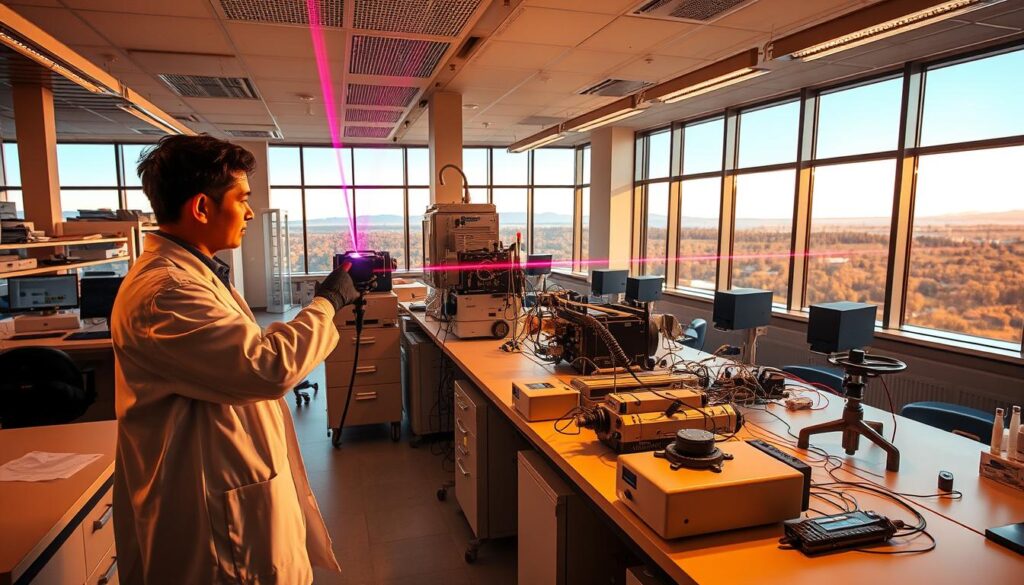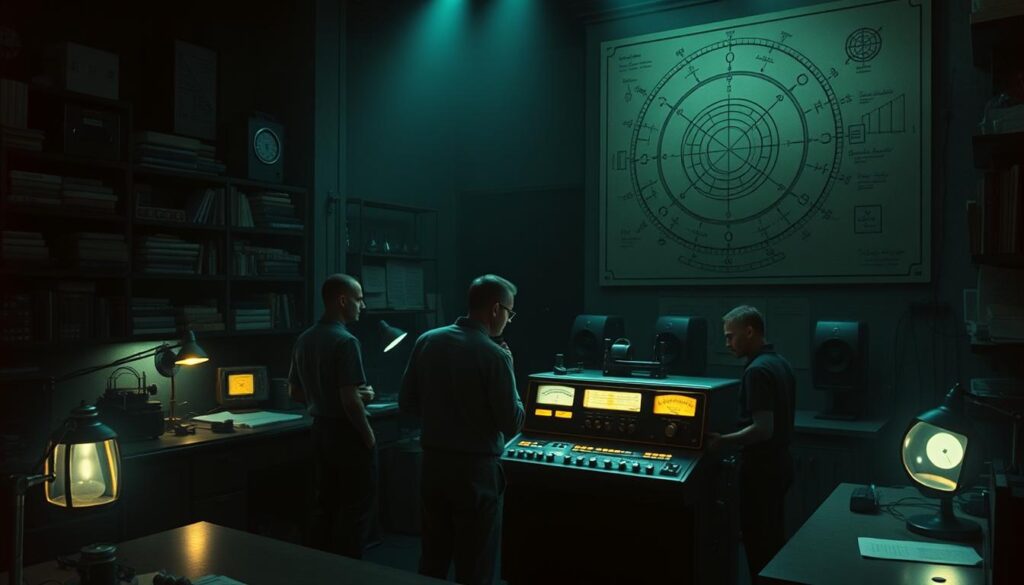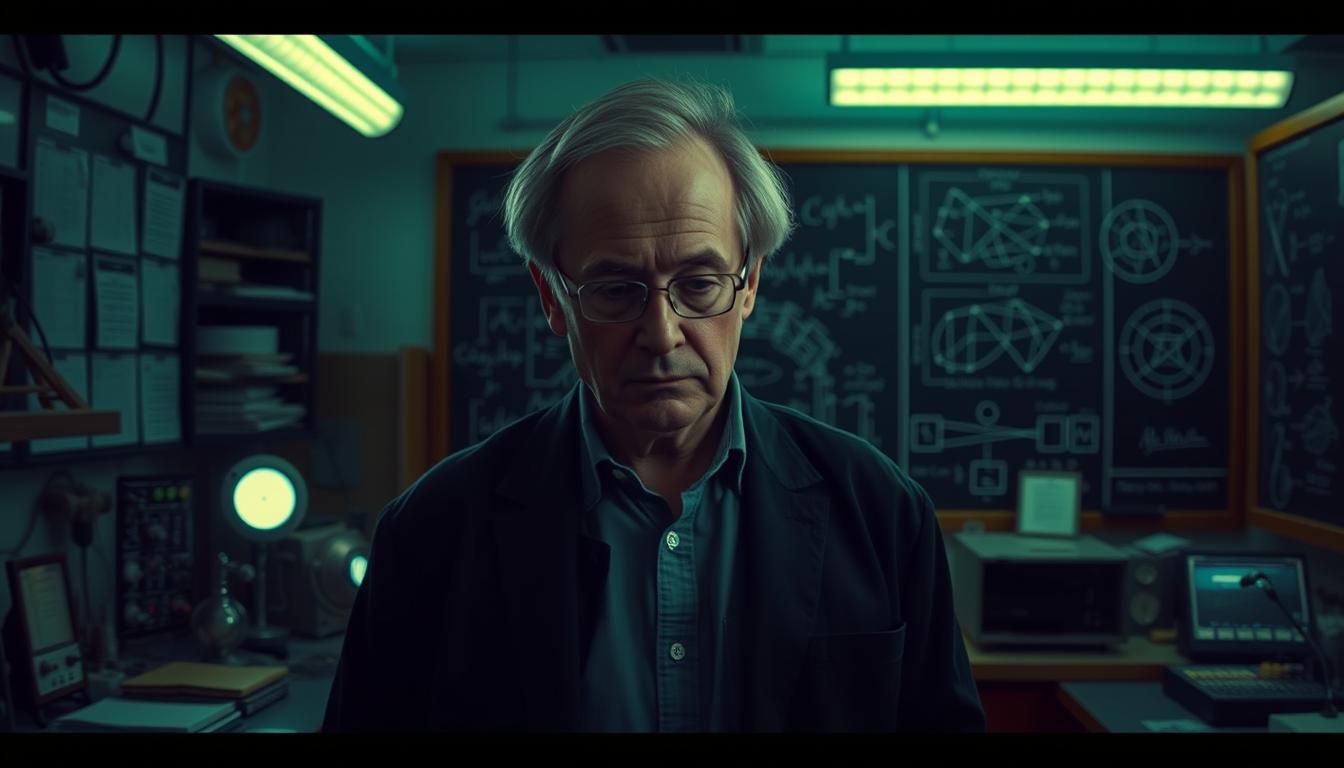Few scientists have bridged the gap between mainstream physics and unconventional research like Dr. Hal Puthoff. With a Ph.D. from Stanford and decades of work at top institutions, his studies span quantum electronics, zero-point energy, and even parapsychology.
Puthoff’s career includes pioneering laser technology at SRI International and controversial experiments in remote viewing for the CIA. His theories on vacuum energy and propulsion concepts continue to influence space exploration research today.
What makes his work unique is how it connects hard science with fringe topics. From engineering breakthroughs to psi phenomena studies, he challenges conventional boundaries while maintaining academic rigor.
Key Takeaways
- Combined expertise in quantum physics and parapsychology
- Developed groundbreaking theories on zero-point energy
- Led classified government research programs
- Published over 100 scientific papers across disciplines
- Co-authored fundamental quantum electronics textbook
Early Life and Academic Foundations
From electromagnetic fascination to quantum breakthroughs, one scientist’s journey began in Chicago. A childhood curiosity about energy and waves laid the groundwork for a career bridging rigorous physics and innovative engineering.
From Chicago to Stanford: A Brilliant Mind Emerges
After earning BS and MS degrees at the University of Florida, he pursued a Ph.D. at Stanford University. His 1967 thesis, “The Stimulated Raman Effect and Its Application as Tunable Laser,” hinted at future innovations.
“The Raman effect’s tunability opened new frontiers in laser technology.”

Breakthroughs in Laser Physics and Quantum Electronics
Collaborating with Richard Pantell in 1969, he co-developed the first tunable Raman laser. This engineering feat revolutionized precision instruments, from medical devices to space exploration tools.
His work extended beyond labs. The textbook Fundamentals of Quantum Electronics became a staple for students, merging theory with practical applications.
| Milestone | Year | Impact |
|---|---|---|
| Ph.D. at Stanford | 1967 | Pioneered Raman laser research |
| Tunable Laser Patent | 1969 | Enabled adjustable-wavelength lasers |
| Textbook Publication | 1970s | Standardized quantum electronics education |
By the 1970s, his focus shifted from conventional physics to exploring zero-point energy—a transition reflecting his lifelong drive to push boundaries.
Key Takeaway: Early academic rigor at Stanford University and hands-on engineering work shaped a career that redefined laser technology and quantum theory.
Hal Puthoff’s Controversial Foray into Parapsychology
Military interest in psychic phenomena sparked one of the most debated research projects in history. At SRI International, scientists explored whether human cognition could transcend physical limits—a bold premise that blurred lines between science and speculation.

The SRI Years and the Stargate Project
From 1972 to 1995, the CIA funneled $20 million into the Stargate Project. Its goal? To harness power like remote viewing for intelligence gathering. Critics argued the experiments lacked controls, but proponents cited tantalizing results.
- Key Focus: Military applications of psychic phenomena, including espionage.
- Notable Flaw: Cue leakage in early studies, later debunked by independent teams.
- Legacy: Inspired TV shows like The X-Files, embedding the idea of “psychic spies” in pop culture.
Uri Geller, Remote Viewing, and Scientific Scrutiny
Israeli performer Uri Geller became a test subject, claiming to bend metal with his mind. While some experiments seemed convincing, others noted loose protocols. A Nature paper on Geller’s abilities faced fierce backlash for methodological gaps.
“Anomalous cognition deserves rigorous study, even if it challenges mainstream views.”
Replication failures by Marks and Kammann further eroded credibility. Yet, the field of parapsychology still references these studies as a cautionary tale—and a testament to the allure of the unknown. For more on cognitive anomalies, explore different types of clairvoyance.
Hal Puthoff’s Pioneering Work in Physics
The vacuum of space isn’t empty—it pulses with untapped energy, a revelation that reshaped modern physics. At the heart of this breakthrough lies zero-point energy, the faint hum of quantum fluctuations that persists even at absolute zero temperature.

Zero-Point Energy: A Revolutionary Theory
In 1989, a radical paper proposed that gravity might stem from quantum vacuum fluctuations. This challenged Einstein’s relativity, suggesting a unified theory where forces emerge from the fabric of space itself.
Key implications:
- Inertia explained: Later work (1994) tied inertia to Lorentz forces in the zero-point field.
- Patent potential: A 1998 U.S. patent outlined methods to harness vacuum energy for transmission.
- Space propulsion: Current research explores warp drive metrics using these principles.
The Polarizable Vacuum Model and Its Implications
The Polarizable Vacuum (PV) model reimagines spacetime as a mutable medium. Unlike general relativity, it treats gravity as a refractive effect of the vacuum—like light bending through glass.
Critics like Carlip argue it violates thermodynamics, yet proponents highlight its predictive power for:
- Metric engineering: Manipulating spacetime for faster-than-light travel concepts.
- Clean energy: Extracting zero-point energy without fossil fuels.
“The PV model isn’t just math—it’s a blueprint for technologies we once called impossible.”
Conclusion: Hal Puthoff’s Lasting Legacy
Advanced propulsion and zero-point energy research owe much to one physicist’s bold ideas. Founding EarthTech International in 1991, he pushed engineering boundaries with warp drive metrics and quantum vacuum theories—now echoed in DARPA-funded studies.
His later role co-launching To The Stars Academy blended physics with UFO investigations, fueling both scientific curiosity and conspiracy theories. Whether seen as a visionary or modern alchemist, his work reshaped how we view space and energy.
Few bridge academia and speculation so seamlessly. For more on unconventional science, explore the science behind the law of. His dual legacy proves: the future of propulsion might lie in yesterday’s fringe ideas.

